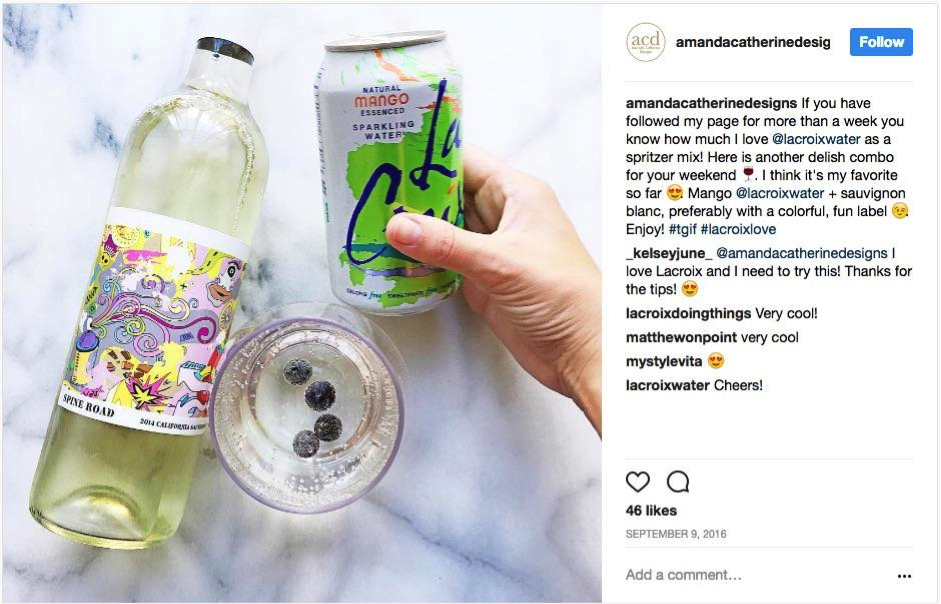 As the competition for acquiring the biggest market share heats up, an increasing number of brands are realizing the role micro influencers play in making their brand story a success.
As the competition for acquiring the biggest market share heats up, an increasing number of brands are realizing the role micro influencers play in making their brand story a success.
Reaching the target audience is as important as achieving high sales.
Finding new audiences is why brands are leaving no stone unturned in sharpening and modernizing their marketing tactics, which is where micro influencers come into the picture.
Why Micro Influencers?
As per a report published by micro influencer marketing platform #HASHOFF:
Brands are increasingly relying on micro influencers to share their brand messages since these influencers have higher engagement rates and are more passionate, creative, and authentic.
If you consider the findings of a study conducted by Experticity, you’ll learn the following:
- Eighty-two percent of consumers are highly likely to follow a recommendation made by a micro influencer.
- Micro influencers have 22 percent more ‘buying conversations’ than the average consumer.
- Users with 1,000- 4,000 followers receive 4.5 percent engagement.
So, Who Are Micro Influencers?
While there’s no set definition yet, a micro influencer can be anyone.
Whether it’s average Joe, who creates actionable content and has a larger-than-average audience; or it’s an influential thought leader with 10,000 to 100,000 followers on social media, a micro influencer does the job of inspiring and encouraging fans to buy the products/services he/she suggests.
Mavrck defines micro influencers as everyday consumers with 500 to 5,000 highly engaged followers around relevant topics.
Scrunch offers a detailed breakup of the size of a micro-influencer’s followers depending on the platform:
Instagram: 3,500 to 133,000 followers
Facebook: 13,000 to 500,000 followers
Twitter: 3,000 to 82,000 followers
Micro influencers have audiences who are more targeted, they’re more within your means, and people find them to be more trustworthy.
People from their close-knit circles follow them, which gives them a niche fanbase.
Their content is, therefore, more personalized, authentic, and engaging.
Higher engagement typically results in better conversions.
Your organization can gain visibility, be more engaging, and promote your products better with the help of effective micro influencers.
Finding the Right Micro Influencers for Your Business
-
Social Media
The best place to look for micro influencers is social media.
If you look through your business page’s followers list, you’ll find micro influencers who already know about and are interested in your brand.
Approach them directly as they will know and trust you, and probably look forward to collaborating with you.
-
Hashtags
A lot of micro influencers may not be familiar with your brand, but this does not mean you do not approach them.
Use hashtags to identify influencers who are already present in your niche.
They’re more likely to cater to a suitable target audience.
Use a specific hashtag to search for them on Google, and you will get results from various social media platforms.
For example, if you’re the owner of a restaurant that serves organic food, search for “#organicfood” or “#organicfoodblogger, ” and you’ll find relevant results.
Engage with micro influencers by approaching them directly, and send them freebies or samples of your products so they can review and promote.
-
Local Bloggers
Work with local bloggers who serve your niche by performing a simple location-specific Google search.
For example, you can look for “bloggers in XYZ city” and once you get the results, check out the blogs mentioned in the list.
Identify the popular bloggers, reach out to them, and engage them in a partnership.
-
Tools
Use third-party tools to find micro influencers in your niche in less time.
Tools such as Buzzsumo, Traackr, PeerIndex, Keyhole, and Klout can help.
Once you have your list of influencers, see their profiles to evaluate which ones are relevant to your business.
From there, you can extend a partnership.
Let’s take you through a couple of brands that have successfully leveraged influencer marketing:
GAP
The immensely successful Styld.by campaign by GAP featured numerous influential social media personalities who showed off ways in which they included GAP merchandise in their wardrobes.
Followers of these influencers had the option to “Shop this Look” in the caption of the photos.

La Croix
With the help of micro influencers, La Croix managed to grow its Instagram following from 5,000 to 77,000 followers.
In fact, the beverage brand now has its very own community.
They achieved this by asking micro lifestyle bloggers to create drink recipes that used La Croix beverages.

Micro Influencers vs. Top Celebrities
In case you’re having a hard time choosing between celebrities and micro influencers to engage audiences, we recommend the latter:
- Kayla Brennan, Founder and CEO of HelloSociety, an agency that connects brands with influencers opines, “When it comes to celebrity accounts, who have maybe millions of followers nobody believes that a celebrity is a real fan of a product they’re trying to sell.” This speaks volumes.
- Celebrities may have more followers, but might not be experts in your niche. Micro influencers know a great deal about your niche and followers find their opinions more reliable. Fans are more likely to buy anything they endorse.
- Celebrity endorsements involve one-way communication. Micro influencers have more engaged followers.
- The content dished out by celebrities isn’t created by them. They merely play a role. Micro influencers create content based on their first-hand experiences with the product.
- Celebrities charge big bucks to endorse brands, and their endorsements do not guarantee desired results. Micro influencers offer flexibility in this aspect and may be more budget-friendly.
The above data proves micro influencers are here to stay.
If you have worked with them to engage audiences, do let us know how you did so in your comments.